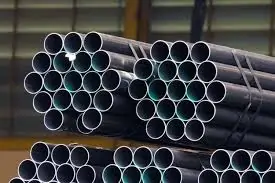Steel remains one of the most essential materials in the construction, manufacturing, and infrastructure sectors. Among the wide range of structural steels available, ASTM A500 structural tubing and ASTM A36 carbon steel are two of the most commonly specified standards. While both are widely used, they serve different purposes, come in different product forms, and carry different pricing structures.
Understanding the price per ton of A500 tubing and the per kilogram price comparison between A36 and A500 helps engineers, contractors, and procurement professionals make informed decisions.
ASTM A500 Structural Tubing – Price per Ton
ASTM A500 is the American standard specification for cold-formed welded and seamless carbon steel structural tubing in round, square, and rectangular shapes. It is widely used in building frameworks, bridges, support columns, machinery bases, and other structural applications.
General Market Price Range (Per Ton)
-
Bare / Black A500 Tubing: USD 480 – 600 per metric ton.
-
Galvanized A500 Tubing: USD 550 – 650 per metric ton, depending on zinc coating thickness and processing.
-
Higher Grades / Heavy-Wall Sections: Can range between USD 600 – 750 per metric ton.
This means that per kilogram, the base cost generally falls between USD 0.48 – 0.65 per kg, with galvanised or higher-spec material closer to USD 0.60 – 0.75 per kg.
Factors Influencing A500 Price per Ton
-
Grade Selection (A, B, C, D): Higher yield strength and tighter tolerances usually cost more.
-
Section Size and Wall Thickness: Larger or thicker tubes use more steel and are more expensive per ton.
-
Surface Treatment: Galvanised or coated tubing adds processing costs.
-
Order Volume: Larger bulk orders often get better pricing.
-
Freight and Logistics: Shipping, inland transport, and handling can add USD 50–150 per ton.
-
Market Conditions: Scrap steel prices, energy costs, and global demand all affect per-ton rates.
ASTM A36 vs ASTM A500 – Price per Kilogram
Although both are carbon steels, ASTM A36 and ASTM A500 are used in different ways and therefore priced differently.
ASTM A36
-
Definition: A structural carbon steel plate and shape material, typically hot-rolled.
-
Applications: Beams, channels, angles, plates, bridges, and general structural purposes.
-
Price Range:
-
USD 480 – 620 per ton (≈ USD 0.48 – 0.62 per kg).
-
Commonly on par with or slightly cheaper than A500 tubing due to simpler production.
-
ASTM A500
-
Definition: Cold-formed carbon steel tubing in round, square, and rectangular forms.
-
Applications: Hollow structural sections for frameworks, columns, and mechanical structures.
-
Price Range:
-
USD 500 – 650 per ton (≈ USD 0.50 – 0.65 per kg).
-
Slightly higher due to more processing (forming and welding).
-
Price Comparison
-
On a per-kg basis, ASTM A36 often comes out slightly cheaper than ASTM A500, especially when purchasing standard hot-rolled plate or beam products.
-
ASTM A500 is a bit more expensive because it undergoes cold-forming and has tighter dimensional tolerances.
-
However, the total project cost can be lower with A500 since hollow sections use less steel by weight to achieve the same structural strength, especially in compression and torsional applications.
Practical Example
-
ASTM A36 Plate
-
Price: USD 500 per ton = USD 0.50 per kg.
-
1,000 kg of A36 plate = USD 500.
-
-
ASTM A500 Square Tubing
-
Price: USD 560 per ton = USD 0.56 per kg.
-
1,000 kg of A500 tubing = USD 560.
-
At first glance, A500 is slightly more expensive per kilogram. However, because structural tubing can achieve the same strength with less weight, overall material usage may be lower, making the project cost competitive.
Conclusion
-
ASTM A500 structural tubing price per ton generally ranges between USD 480 and 650, depending on grade, finish, and market conditions.
-
ASTM A36 steel price per kilogram tends to be slightly lower, around USD 0.48 – 0.62 per kg, compared to ASTM A500’s 0.50 – 0.65 per kg.
-
While A36 may be cheaper per kg, A500 often provides structural efficiency, making it cost-effective for hollow section applications.
Both standards are indispensable in modern construction and manufacturing, and the choice often depends more on application requirements than purely on price.




